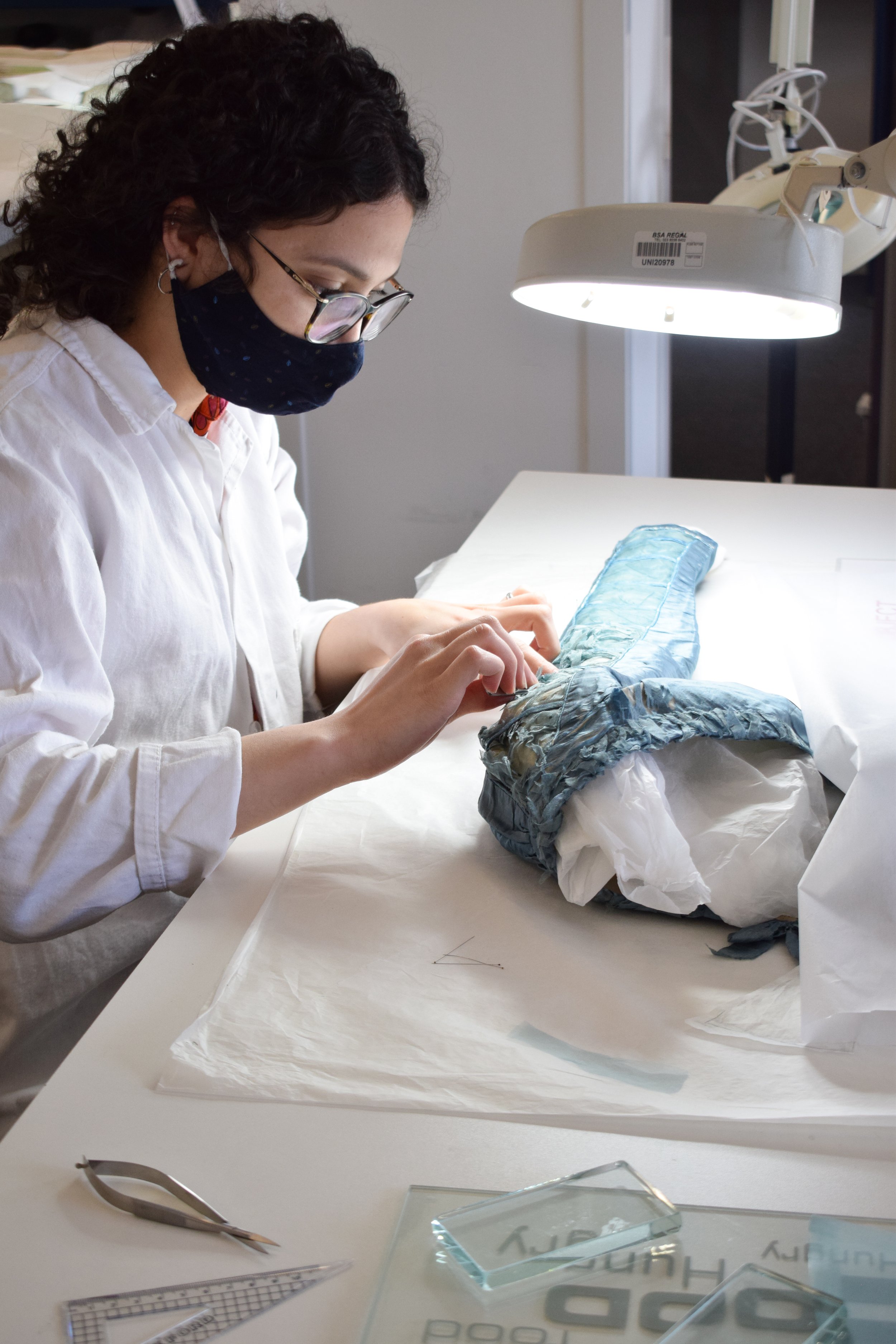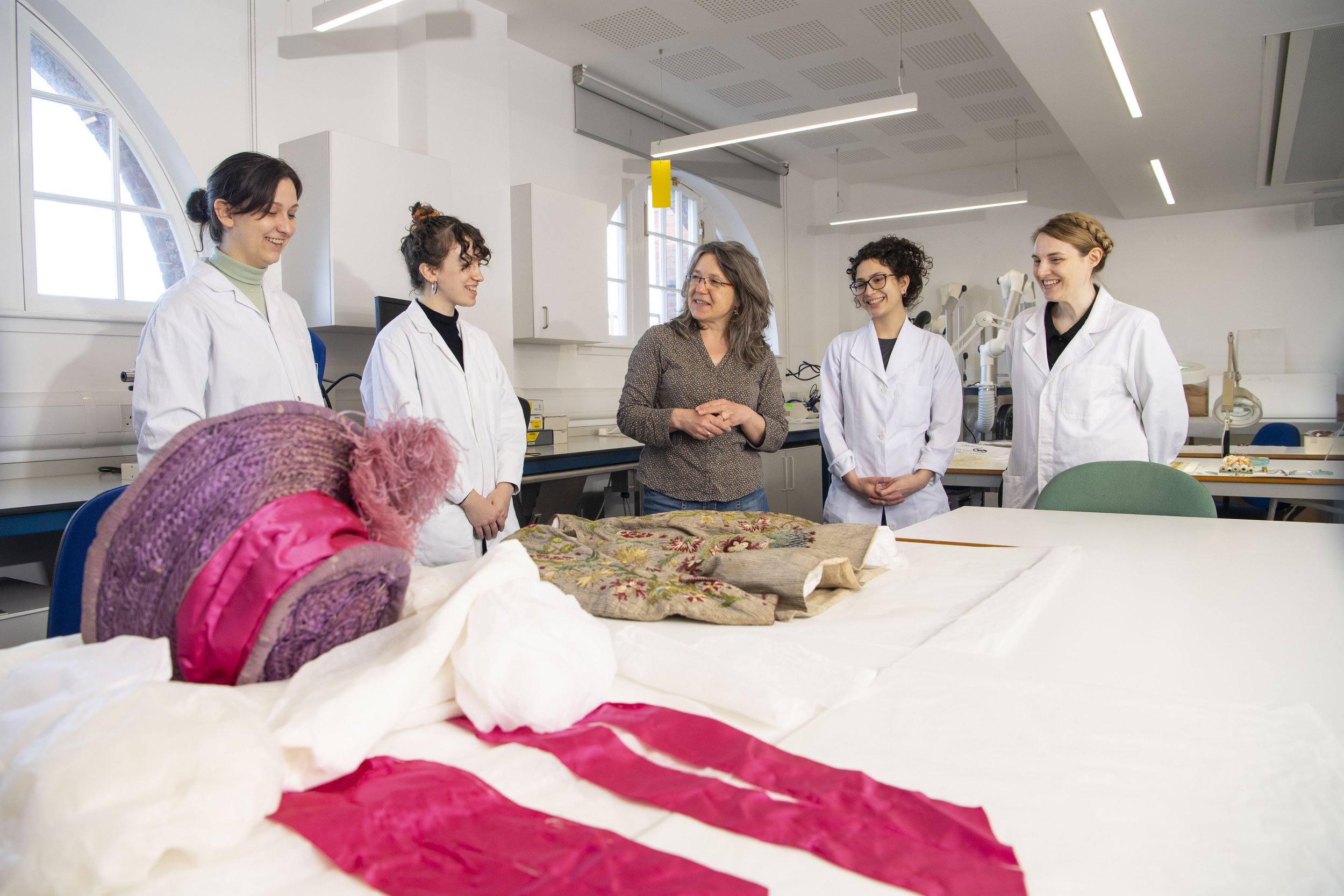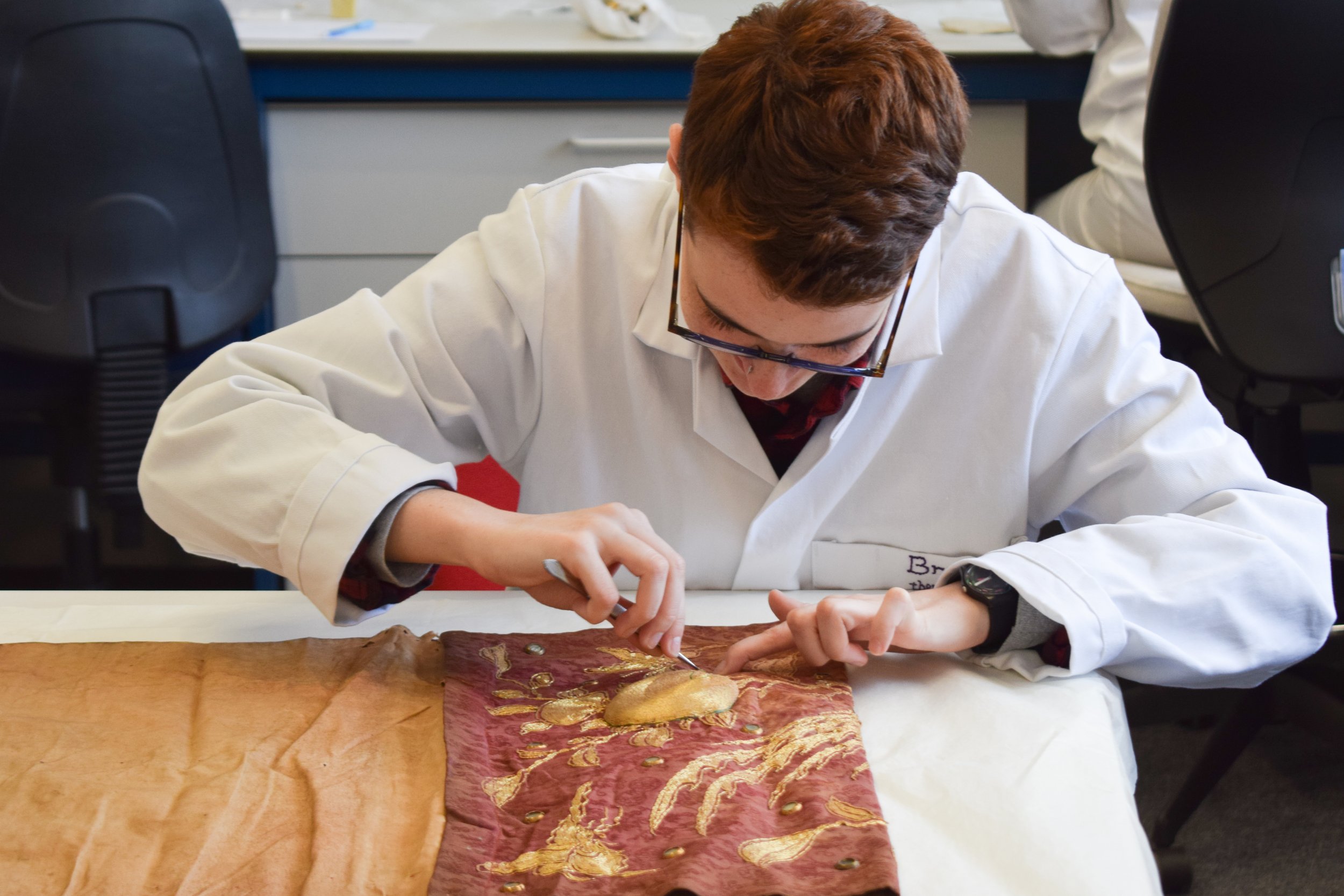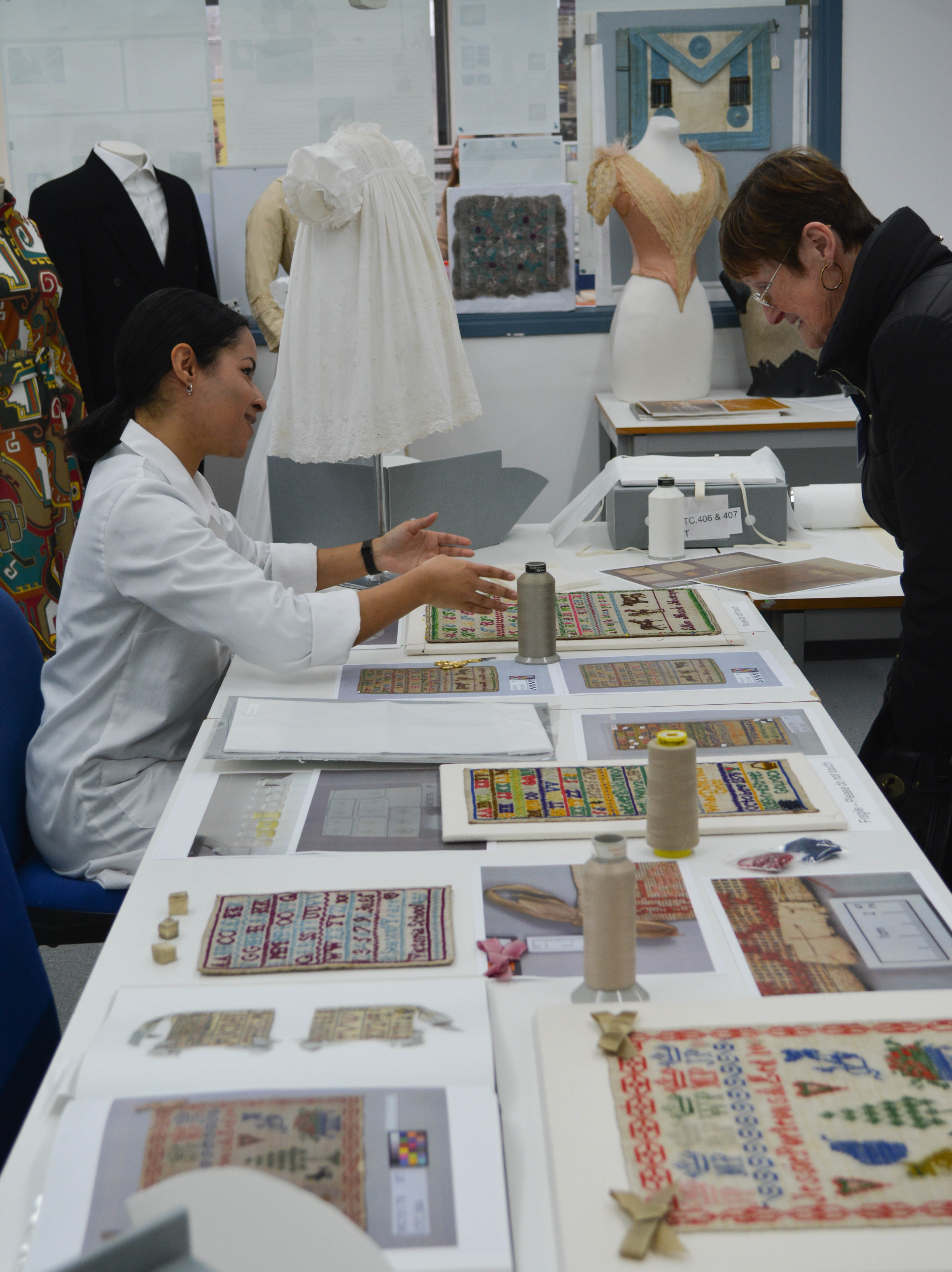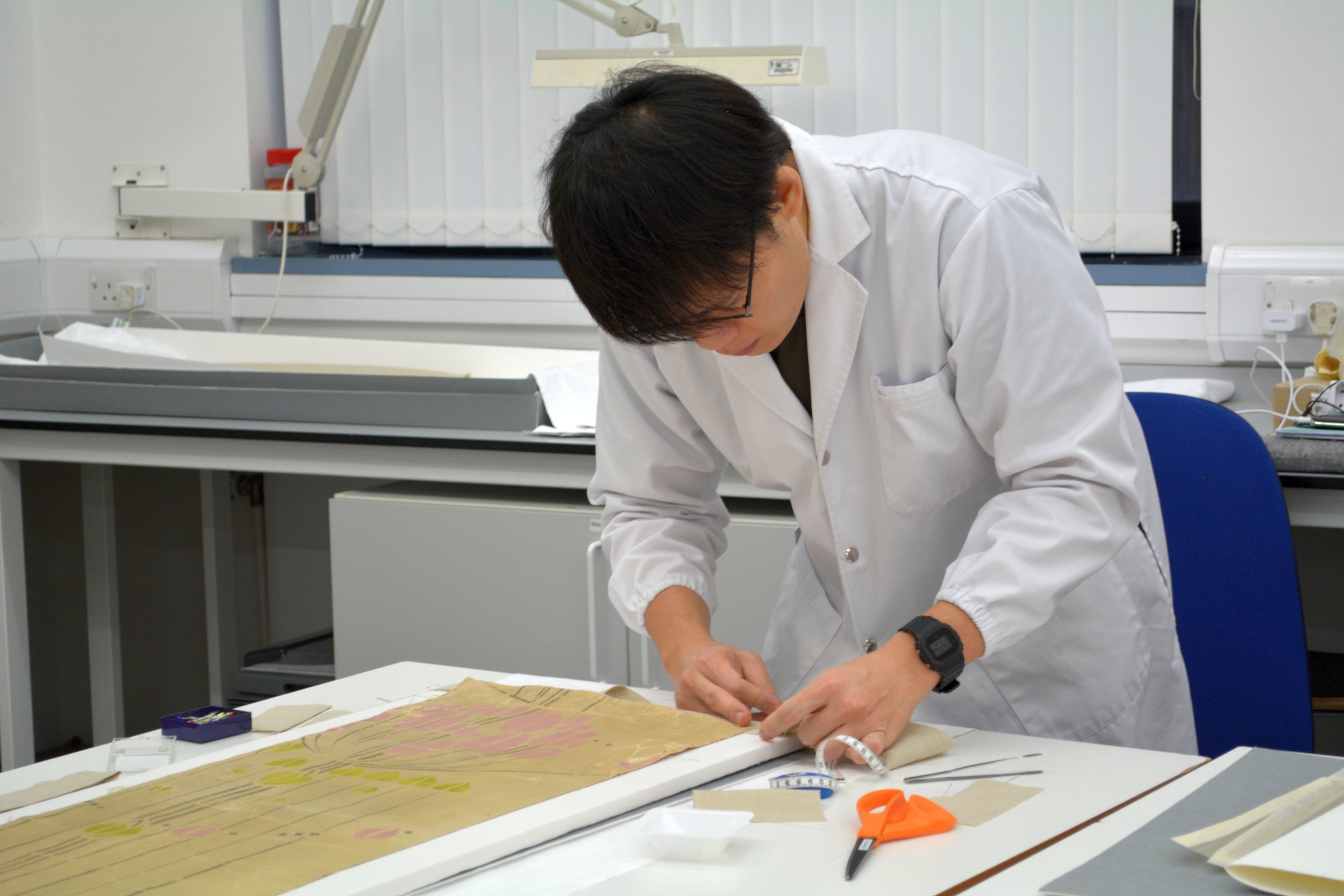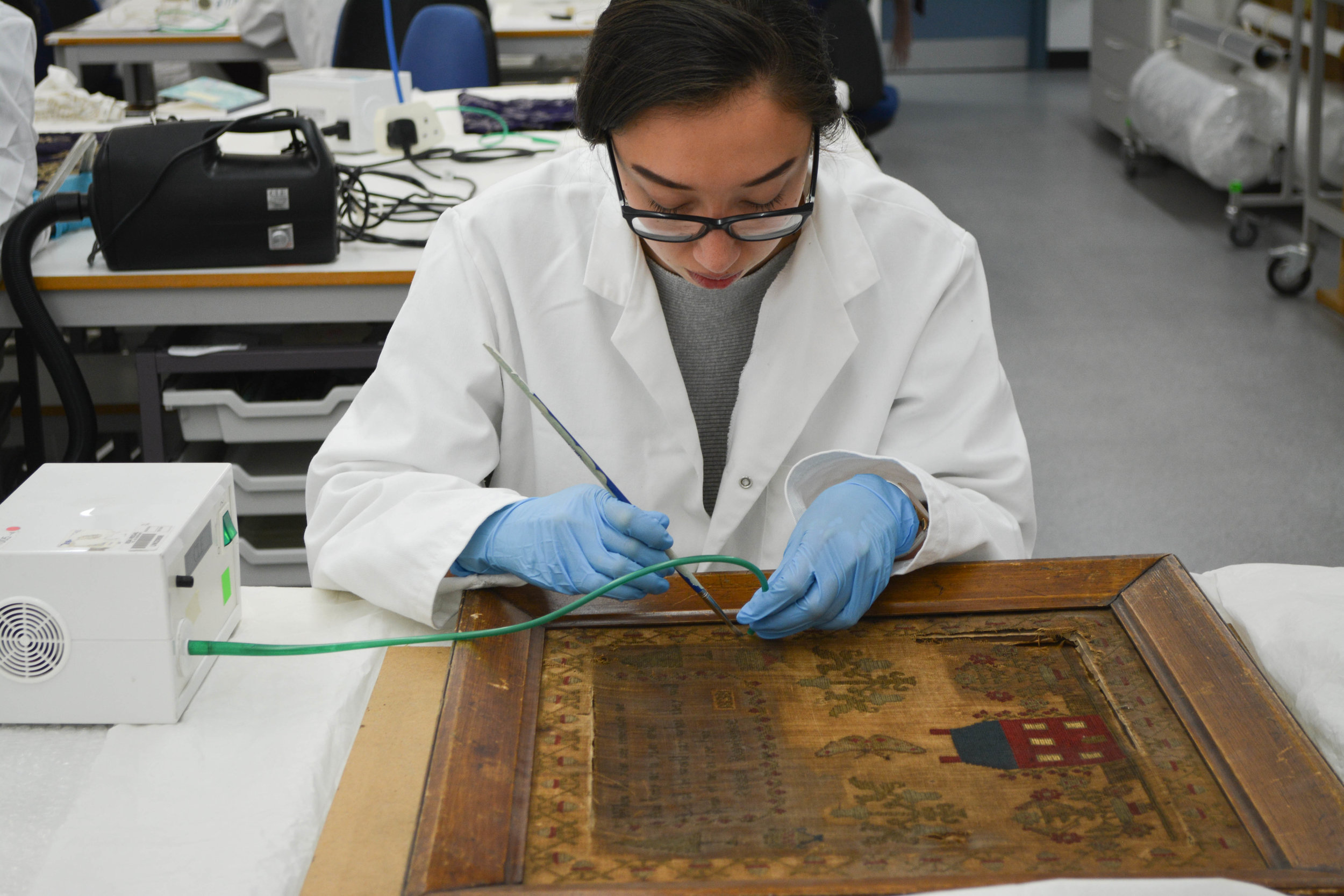Applications are invited for the role of Consultant to the Textile Conservation Foundation (TCF). The Consultant’s main task will be to raise funds for bursaries for students on the world-leading MPhil Textile Conservation (TC) and the MPhil Book & Paper Conservation (BAPC, which is expected to begin in 2025) at the Kelvin Centre for Conservation and Cultural Heritage Research (Kelvin Centre), University of Glasgow.
This is a unique opportunity to make a really significant and lasting contribution to the sector. You will build on the outstanding and decades-long record of successful fundraising by the TCF to help talented young people to train as conservators. Graduates from this Centre and its predecessor (the TCC) now work in over 40 countries, caring for heritage collections in the UK and around the world.
The TCF has benefitted from generous and consistent support from many funders, often for many decades, and has excellent relationships with these funders. A key task for the Consultant will be to foster and develop these relationships in addition to developing new ones.
The Consultant will have a background in conservation or heritage plus experience of fundraising. The Consultant will normally work from home/own office, visiting the Kelvin Centre in Glasgow for Trustee and other meetings; it will therefore suit someone who lives in Scotland or can travel to Glasgow reasonably easily.
The fee offered is £9,000 per annum; the number of days are expected to be 22 so the day rate will be £400. Reasonable expenses will be paid. The workload varies over the course of the year with the busiest periods being June – October as detailed below.
The current Consultant, Nell Hoare, will retire from the role at the end of July; she was previously Director of the TCC and, since 2009, has been Consultant to the Foundation. Ideally we would like to engage her successor with sufficient time to allow a good handover period.
For details about the TCF, the role and the skills and experience needed follow this link to download the job information here; you can download the TC Foundation’s most recent annual report here.
Applications
Please apply by 8th May, emailing your application to info@tccfoundation.org.uk
You should include a letter summarising your relevant skills and experience and explaining what you feel you could bring to the role plus a 2-page CV and details of two referees whom we can approach.
If you would like an informal conversation about the role please email the above email address giving a phone number on which we can reach you.

